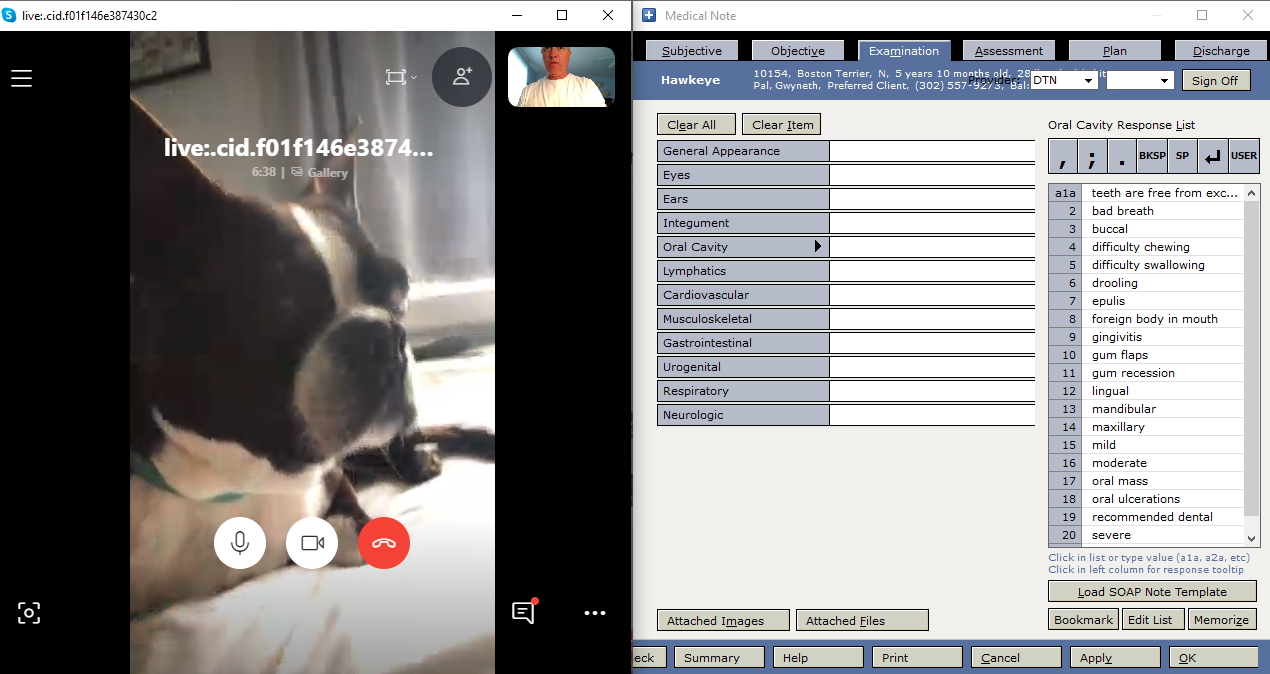Video conferencing
Technology can play a vital role in reducing the impact of COVID-19 and allow you to provide patient care even when you are not there physically. Video conferencing is a great way for a veterinarian to connect with a client and patient, and most of these tools are free to use. A video conferencing service running side by side with VIA allows for a visual inspection of the patient on your screen while quickly entering medical notes in VIA. Some of the leading services that we recommend are:
- Skype
- Google Hangouts
- Amazon Chime
Please visit these sites to learn more as well as YouTube to find training information on each.
You may have to choose a paid subscription in order to activate enhanced functionality such as recording your video conference, depending on the company you are using. Once saved, the recording can easily be attached to the patient record in VIA.
An ideal set-up for video conferencing may be to attach a second monitor to a tablet or laptop in order to expand your working space. Then each monitor can be used for a different program; one for VIA and one for the video conference.
If your laptop does not have an HDMI port to drive a second screen, you could alternatively use a USB monitor, which only requires a single USB-C 3.0 port for both power and data such as this: https://www.amazon.com/AOC-i1601fwux-Extremely-Portable-1920×1080/dp/B06Y8SSQG5/
In cases where two monitors aren’t available you can simply minimize and use the Microsoft ‘snap’ tool to split your screen (see https://support.microsoft.com/en-au/help/4027324/windows-10-snap-your-windows) and then run your video conference and VIA side by side.
As you can see, video conferencing may enable patient care ranging from basic examinations to more advanced triage. In cases where consent forms need to be reviewed and accepted, use VIA’s built-in email tools to send the documents.


